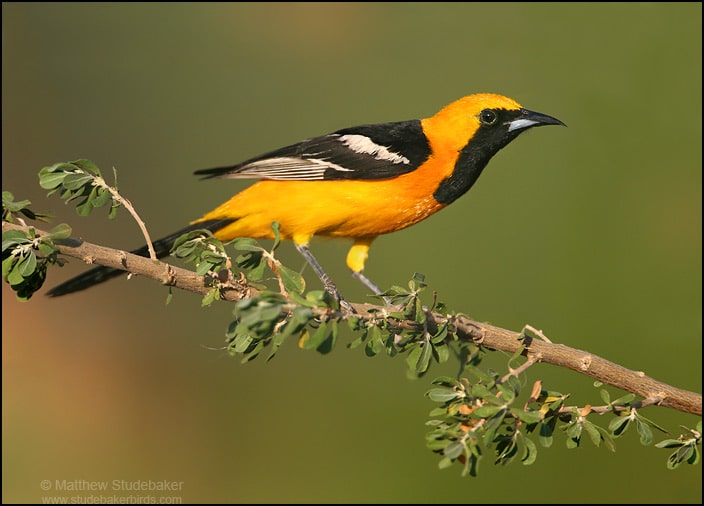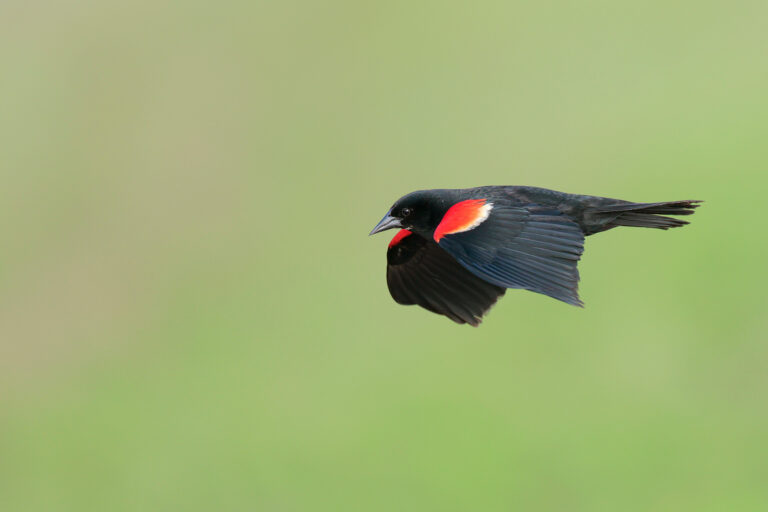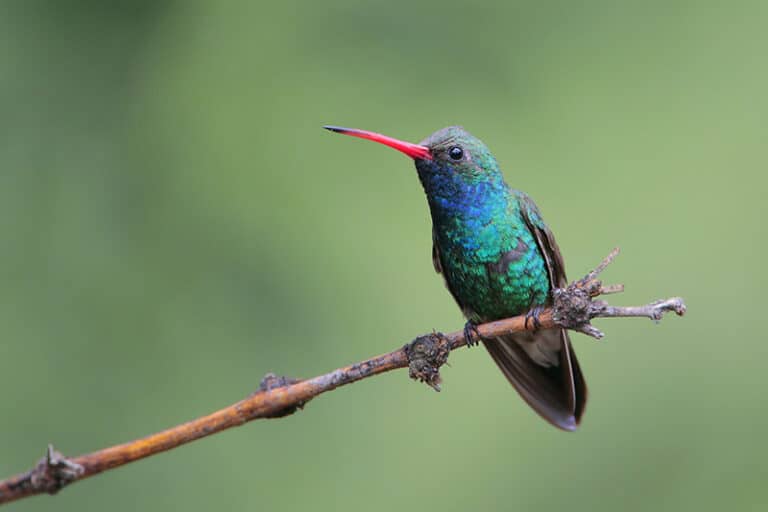I stepped outside one recent morning and heard the familiar, slightly buzzy and nasal wheet call of a Hooded Oriole, looked up, and of course it was in a palm tree. The arrival in our neighborhood of this strikingly yellow and black Icterid (blackbird family) mirrors that of the species’s urban expansion in the west in recent years. Its range is slowly moving up the western coast of the US as more people plant ornamental palm trees, a favorite nest site for the birds. And what a nest it is! Like other orioles, the females weave grass and plant fibers together to form a hanging basket that they stitch to the underside of leaves. In addition to palms, Hooded Orioles utilize the cottonwood, willow, and sycamore trees of the desert southwest and the lower Rio Grande Valley of Texas where populations are declining due to cowbird nest parasitism.
Surprisingly for a bright yellow bird, Hooded Orioles can be difficult to see while slowly foraging and quietly singing up in the tree canopy. To help locate them, listen for both males and females vocalizing with a disorganized-sounding song of sweet warbles and chatter along with harsh chuck calls and the nasal wheet that sounds a bit like a House Finch. They are also known to mimic other birds, including Gila Woodpeckers and Ash-throated Flycatchers in Arizona.
Hooded Orioles return to Tucson after wintering on the western coast of Mexico. Try attracting these beautiful “palm-leaf orioles” to your yard by hanging feeders of fruit, sugar water, or jelly. You might be relieved to find out you don’t have to plant a palm tree!




